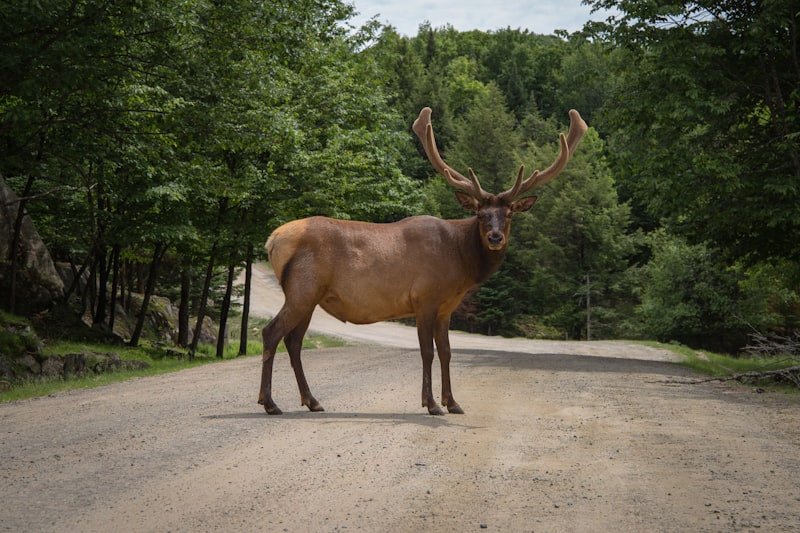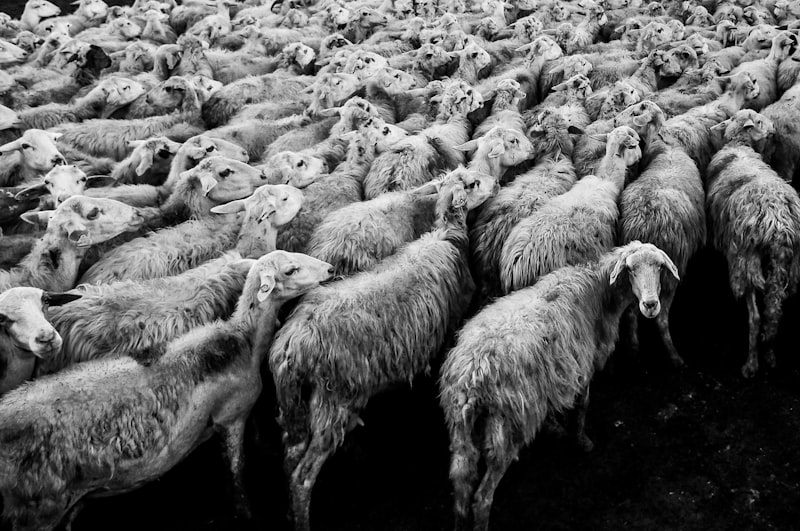Ever wondered how nocturnal animals like owls and bats manage to be so active at night while most of us are fast asleep? It all boils down to their incredible biological clocks. These internal timekeepers are finely tuned to the rhythms of day and night, allowing these creatures to thrive in the darkness.
Unlike humans, who are diurnal (active during the day), many animals have evolved to be nocturnal, which means they are most active during nighttime hours. This adaptation isn’t just about preference; it’s a survival strategy honed over millions of years of evolution. Nocturnal animals have specialized eyesight, hearing, and other senses that give them a distinct advantage in the dark.
At the heart of this nocturnal lifestyle is their biological clock, also known as the circadian rhythm. This internal clock isn’t a little ticking device inside their bodies but a complex system of genes, proteins, and cells that regulate their behavior and physiology over a 24-hour cycle. It helps them anticipate environmental changes, such as the rising and setting of the sun, allowing them to adjust their activities accordingly.
Imagine their biological clock as a finely tuned orchestra conductor, orchestrating the symphony of their nightly activities. When dusk falls, these animals become alert and active, hunting for prey, navigating through the shadows, or communicating with others of their kind. This heightened activity continues until dawn approaches, signaling them to find shelter and rest.

Studies have shown that even when removed from the natural day-night cycle, these animals maintain their nocturnal behaviors, demonstrating the robustness of their internal clocks. This adaptability not only aids in their survival but also contributes to the delicate balance of ecosystems they inhabit.
Understanding how biological clocks operate in nocturnal animals not only fascinates scientists but also sheds light on our own circadian rhythms. By studying these creatures, researchers hope to uncover insights that could potentially benefit human health, particularly in areas related to sleep disorders and shift work.
Unlocking the Secrets of Nocturnal Rhythms: How Biological Clocks Shape Animal Behavior
Have you ever wondered how animals manage to stay active at night while we humans wind down for sleep? The answer lies in the fascinating realm of biological clocks, also known as circadian rhythms, which play a crucial role in shaping animal behavior. These internal timekeepers regulate various physiological processes, from sleep-wake cycles to hormone production, aligning them with environmental changes like day and night.
Biological clocks are not just a human phenomenon; they are deeply ingrained in the lives of all living beings, influencing everything from when animals hunt to when they rest. For nocturnal creatures, such as owls or bats, these clocks are particularly crucial. They dictate when these animals are most alert and capable of hunting prey under the cover of darkness. Imagine a barn owl silently gliding through the night, its keen senses heightened by a biological clock finely tuned to nocturnal activities.
Interestingly, these clocks are not static but adaptable. They can adjust to changes in light and temperature, allowing animals to synchronize their activities with seasonal variations. This adaptability is vital for survival in the wild, where environmental conditions can fluctuate dramatically.
But how do biological clocks actually work? At their core are molecular mechanisms within cells that operate on a roughly 24-hour cycle. These mechanisms respond to external cues, primarily light, which is detected by specialized cells in the eyes and then transmitted to the brain’s suprachiasmatic nucleus (SCN). The SCN acts as the master clock, coordinating signals that regulate body temperature, hormone levels, and sleep patterns.
Understanding these mechanisms not only sheds light on animal behavior but also has implications for human health. Disruptions to our own circadian rhythms, such as those caused by shift work or jet lag, can lead to sleep disorders and other health problems. By studying how biological clocks operate in different animals, scientists hope to unlock new insights into improving sleep quality and overall well-being.

This article aims to capture the reader’s interest with engaging insights into how biological clocks influence animal behavior while maintaining a conversational and informative tone.
From Dusk Till Dawn: The Intricate Mechanics of Nocturnal Animal Circadian Rhythms
Ever wondered how creatures of the night keep their biological clocks ticking? Nocturnal animals, from owls to bats and raccoons, navigate a fascinating world governed by their circadian rhythms. Unlike us diurnal beings who are active during the day, these creatures thrive under the moonlit skies, their internal clocks finely tuned to the rhythms of night and day in reverse.
At the heart of their nocturnal lifestyle lies a complex biological mechanism known as the circadian rhythm. This internal clock regulates various biological processes, from sleep-wake cycles to hormone production and metabolism. For nocturnal animals, this rhythm ensures they are primed for action as twilight sets in, while we humans are winding down.
One key player in this nocturnal symphony is melatonin, often referred to as the “hormone of darkness.” Melatonin levels rise in response to diminishing light, signaling to the body that it’s time to prepare for rest and restoration. In nocturnal animals, this hormone peaks during the day, promoting alertness and activity during their waking hours, which coincide with our nighttime.
Another critical component is the suprachiasmatic nucleus (SCN) in the brain, acting as the central pacemaker. This tiny cluster of cells orchestrates the timing of various physiological processes, ensuring that nocturnal animals are at their peak performance when hunting prey or navigating their environments under the cover of darkness.
Adaptation is key in the evolutionary tale of nocturnal creatures. Over millennia, these animals have developed specialized senses and enhanced visual capabilities to thrive in low-light conditions. Their keen senses of smell, hearing, and night vision are finely tuned adaptations that complement their nocturnal lifestyle, allowing them to detect prey, avoid predators, and navigate their environments effectively.
In essence, the circadian rhythms of nocturnal animals represent a marvel of nature’s adaptation and survival strategies. As they emerge at dusk, ready to explore their world, these creatures showcase the beauty and complexity of biological rhythms tuned to a different beat – one that echoes through the night, leaving us in awe of their nocturnal prowess.
Adaptation Under Moonlight: How Nocturnal Animals Tune Their Biological Clocks
Nocturnal animals face a unique challenge: how to thrive in a world where daylight is replaced by the eerie glow of the moon. Unlike diurnal creatures that are active during the day, nocturnal species have evolved special adaptations to make the most of the nighttime hours. Their biological clocks, or circadian rhythms, play a crucial role in regulating their behavior, metabolism, and even their ability to hunt and communicate.
Take the owl, for example. These majestic birds of prey are perfectly adapted to hunt under the cover of darkness. Their eyes are large and highly sensitive to light, allowing them to see even the faintest movements of their prey in the dimmest moonlit nights. But it’s not just their eyes that are finely tuned – their entire metabolism and hunting behavior are synchronized to peak efficiency during nighttime hours. They sleep during the day, conserving energy for their nightly hunts when their prey is most active.
Bats, on the other hand, use echolocation to navigate and hunt in the darkness. Their biological clocks are finely tuned to regulate when they emerge from their roosts to feed, ensuring they maximize their chances of catching insects buzzing in the night air. Echolocation allows them to “see” their surroundings through sound waves, creating a detailed map of their environment in real-time.
But how do these nocturnal wonders adjust their biological clocks? It’s all about sensitivity to external cues, particularly the cycle of light and darkness. Even under the faint glow of the moon, nocturnal animals can detect subtle changes in light intensity that signal the passage of time. This sensitivity allows them to adjust their internal rhythms accordingly, ensuring they are active and alert precisely when needed.
In essence, the adaptation of nocturnal animals under moonlight is a testament to nature’s ingenuity. By finely tuning their biological clocks to the rhythms of the night, these creatures have mastered the art of survival in a world where darkness reigns supreme.
Night Shift Masters: Exploring the Evolutionary Advantages of Nocturnal Biological Clocks
Imagine a world cloaked in darkness, where every rustle and whisper of the night holds secrets to survival. Nocturnal creatures, from owls to bats, and even certain plants like night-blooming flowers, have honed their biological clocks to synchronize with the rhythm of the night. This adaptation isn’t just about avoiding predators; it’s a finely tuned strategy for thriving in environments where daylight can be harsh and competition intense.
At the heart of this evolutionary feat lies the circadian rhythm, a biological clock that regulates the sleep-wake cycle and other physiological processes over a roughly 24-hour period. For nocturnal species, this clock is finely tuned to align their peak activity, hunting, and reproductive behaviors with the cover of darkness. It’s a dance with time itself, where each beat marks a strategic advantage in the eternal battle for survival.
But what advantages does the night offer? Beyond avoiding diurnal predators, nocturnal creatures often capitalize on reduced competition for resources. Food sources that bloom or become active at night are plentiful and less contested, offering a buffet of sustenance under the cloak of darkness. This bounty fuels their energetic needs and promotes efficient foraging without the heat stress that daylight can bring.
Moreover, the cover of darkness provides a natural veil against harsh environmental conditions. It shields them from extreme temperatures, allowing for more energy-efficient activities such as hunting or seed dispersal. In this nightly world, adaptation has sculpted their senses to perfection, enhancing night vision, sensitivity to sounds, and even scent detection to navigate and exploit the environment’s offerings.
The Science of Sleep: How Nocturnal Animals Navigate Their Circadian Challenges
Imagine a world where the blanket of night conceals a flurry of activity. Creatures like owls, foxes, and bats have evolved to thrive in these conditions, each species finely attuned to the challenges imposed by their circadian rhythms. Unlike diurnal creatures that operate during the day, nocturnal animals have adapted unique strategies to hunt, communicate, and survive under the cover of darkness.
At the heart of their survival lies the intricate balance of their circadian rhythms. These internal biological clocks dictate when an animal should be active and when it should rest. For nocturnal animals, this means being able to synchronize their activities with the ebb and flow of night and day, even if they rarely see the latter.
Take, for example, the barn owl, a master of nocturnal hunting. With senses finely tuned to detect the slightest rustle of prey in the darkness, the barn owl epitomizes the ultimate predator of the night. Its circadian rhythm allows it to sleep during daylight hours when its prey is less active, ensuring it conserves energy for the crucial moments of the night hunt.
Similarly, bats, with their echolocation abilities, exemplify nature’s ingenuity in adapting to nocturnal life. By emitting high-frequency sounds and interpreting the echoes that bounce back, bats navigate the night skies with astonishing precision. Their circadian rhythms are finely tuned to optimize feeding and mating during the dark hours, ensuring their survival in a world where daylight rarely penetrates.
Beyond Day and Night: Understanding the Flexibility of Biological Clocks in Nocturnal Species
Let’s dive into the fascinating world of biological clocks in nocturnal species. Imagine this clock as a master conductor orchestrating a symphony of activities throughout the night. It’s like having a built-in GPS that tells them when to hunt, when to rest, and when to be on high alert for predators.
Biological clocks are not just limited to humans; they exist in every living organism, finely tuned to match their specific lifestyles. For nocturnal animals, this means their clocks are adjusted to peak during the nighttime hours, when they are most active and their senses are heightened. This adaptability allows them to thrive in environments where sunlight is scarce or absent altogether.
But how do these clocks work? At the core of this mechanism are specialized cells within the brain that respond to cues like light and temperature. These cells communicate with each other and synchronize their activities to create a robust internal rhythm. It’s like a team of synchronized swimmers, moving in perfect harmony to maintain balance and efficiency.
Interestingly, biological clocks in nocturnal species also exhibit a certain degree of flexibility. Unlike a rigid schedule, these clocks can be adjusted to adapt to changes in their environment. For example, during periods of food scarcity or extreme weather conditions, their clocks may shift slightly to optimize survival strategies.
Imagine if our own biological clocks were as flexible as those of nocturnal animals. We could adjust effortlessly to changing work schedules or jet lag without missing a beat. It’s a reminder of the incredible diversity of life on Earth and how each species has evolved unique adaptations to thrive in its own niche.
Nocturnal Navigation: How Animals Sync Their Biological Clocks with Lunar Cycles
Imagine a world where every movement and decision hinges on the soft glow of the moon above. For nocturnal animals, this isn’t just a poetic notion—it’s a survival strategy honed over millennia. Take, for instance, the majestic owl. With its keen senses and silent flight, the owl embodies the essence of nocturnal prowess. These birds of prey are known to adjust their hunting patterns based on moonlit nights, utilizing lunar cycles to maximize their hunting success.
Bats, too, are masters of nocturnal navigation. These winged mammals rely heavily on echolocation to navigate the night sky, but their activities are also intricately linked to lunar phases. During full moons, insect populations surge, providing bats with ample prey. This symbiotic relationship between lunar brightness and insect activity showcases nature’s delicate balance.
Even terrestrial creatures like foxes and badgers exhibit lunar-linked behaviors. They often synchronize their foraging and mating activities with the moon’s phases, taking advantage of heightened visibility or the cover of darkness provided by lunar cycles.
In essence, nocturnal navigation isn’t just about sight—it’s about timing, adaptation, and the exquisite interplay between biology and lunar cycles. As the moon waxes and wanes, so too do the rhythms of life for these creatures of the night. It’s a testament to nature’s ingenuity, where every shadow and glimmer holds a clue to survival in the dark.
So, the next time you marvel at the hoot of an owl or the flutter of bats in the moonlit sky, remember the intricate dance they perform with Earth’s celestial companion. It’s a nocturnal symphony orchestrated by the moon, where each creature plays its part in perfect harmony with the lunar cycle.
Frequently Asked Questions
What are biological clocks in nocturnal animals
Biological clocks in nocturnal animals refer to internal timing mechanisms that regulate their behavioral and physiological activities based on the day-night cycle. These clocks help nocturnal animals optimize activities such as hunting, foraging, and avoiding predators during the nighttime hours when they are most active.
Can biological clocks of nocturnal animals be disrupted? How
Yes, the biological clocks of nocturnal animals can be disrupted. Factors such as artificial lighting, changes in environmental conditions, and disturbances in sleep patterns can affect their natural rhythms. Understanding these disruptions is crucial for maintaining their health and behavior.
Why are biological clocks important for nocturnal animals
Biological clocks are crucial for nocturnal animals to regulate essential functions like sleep, activity levels, and hormone production in alignment with their nighttime lifestyle. These internal timekeepers help them optimize survival strategies, such as foraging and avoiding predators, during darkness.
How do nocturnal animals regulate their biological clocks
Learn how nocturnal animals regulate their biological clocks, allowing them to adapt to nighttime activities and maintain essential functions like hunting and navigation.
Do nocturnal animals’ biological clocks synchronize with the environment
Learn how nocturnal animals’ biological clocks synchronize with their environment, influencing their activity patterns and survival strategies.


